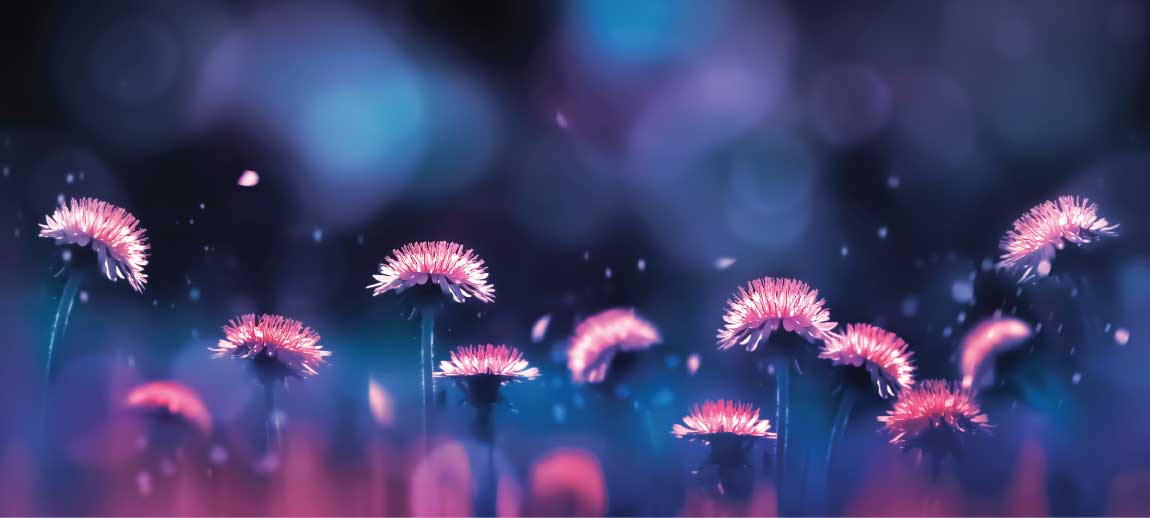Beekeepers never paint their hives red: this is what colors bees see
bees are really curious and interesting insects. Their perception of the world and colors is very different from ours. For example, bees are unable to see red as they can only perceive four colors:
- Yellow
- The bluish green
- The blue
- The ultraviolet.
Bees visualize the colors listed as primary colors and are also able to perceive any shades or mixes. The red color, to their eyes, looks very similar to black. For this reason, beekeepers never paint their hives red.
We understand better how bees see colors and how they choose flowers from which to collect pollen and nectar.
Bees have 5 eyes: 2 compound eyes and 3 simple eyes
The eyes of the bees are positioned on the sides of the head but also on the top. Bees have 5 eyes . The two main ones are called compound eyes and are the larger ones located on the sides of the head. The other three eyes called ocelli are located on the forehead.
Compound eyes are made up of thousands of small elements that allow bees to perceive the image of the environment around them. The ocelli instead are used to focus on the closest objects.
Their view is then optimized thanks to the sensorial perception of the antennas which helps the bees to distinguish shapes and to perceive the size of objects.
How bees see the colors of flowers

Bees go to bottinare daily. For the collection of pollen and nectar , bees visit a very large number of flowers. But on what basis do bees choose the flowers to visit? In this case, nature has evolved in a surprising way. The flowers have developed the ability to attract bees by reflecting the ultraviolet.
This reflection allows bees to perceive colors belonging to their visible spectrum, in a very intense way. This explains why bees are attracted to poppies, for example. Despite being red, poppies reflect a significant amount of ultraviolet light and therefore manage to attract bees even if they are red in color.
The bees therefore do not visualize the colors as we see them but, through the perception of ultraviolet, they are able to understand which are the most inviting flowers. The flowers also have small spots of color, which indicate to the bees where to position themselves to find nectar more easily.
It's as if the flowers somehow offer bees all the elements they need to make it easier for them to find food.
Pollination of flowers and plants: a very important element
The work of pollination of bees is essential for the survival of plant species. Pollinating insects and especially bees are responsible for about one third of the world's food available.
Their work is irreplaceable and is what allows flowers and plants to reproduce. By passing from one flower to another, bees allow the fertilization of plant species. Pollination is an essential element for our planet , for ecosystems and also for ensuring the availability of food for humans.
What do bees see that we don't see?
In addition to the different perception of colors, bees can also see polarized light. It is thanks to this that these animals are able to orient themselves even in cloudy skies.
In fact, bees use the sun's rays as a compass. By identifying the position of the sun, bees are able to move and find their way back to the hive. Therefore, by identifying polarized light, bees are always able to detect the position of the sun even when the sky is overcast.
We humans, on the other hand, do not see polarized light and are unable to understand the position of the sun when the sky is cloudy.
The color of the hives: does it matter?
Often beekeepers place the hives next to each other. For this reason it is important to paint the hives in different colors . When the bees return to the hive, it is important that they are able to orient themselves and identify the hive they belong to.
If this didn't happen, it would create considerable unrest among the families. Each cologne has a different smell. For this reason, it could happen that a bee that returns to the wrong hive is rejected.
Beekeepers must paint the hives respecting the colors that the bees are able to see and therefore yellow, bluish green and blue. The hives can also be enriched with small shapes that bees recognize. If you want more information on how to help bees find their way, you can consult our article: The colors and shapes recognized by bees
Are you a beekeeper? Do you want to buy Queen bees, cores and bee packs?
If your passion for beekeeping has brought you this far, if you are a beekeeper and you need bees for your farm, choose Apicoltura Laterza! We take care of the production and sale of queen bees of the Buckfast and Ligustica breed! In addition, you can also order bee cores on 5 frames and bee packs online.
Our breeding also deals with the production of the highest quality honey.
We ship throughout Italy and throughout Europe! Buy your bees now on the website: www.apicolturalaterza.it

 English
English  Italiano
Italiano  Estonian
Estonian  Finnish
Finnish  Français
Français  Deutsch
Deutsch  Latvian
Latvian  Norsk
Norsk  Polski
Polski  Română
Română  Español
Español  Svenska
Svenska